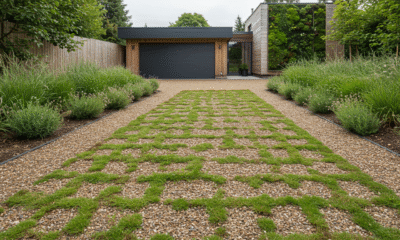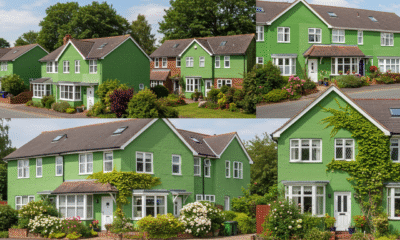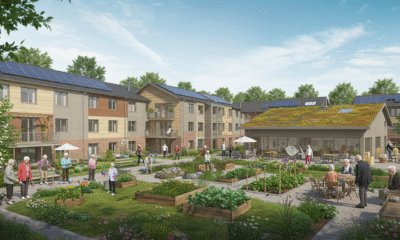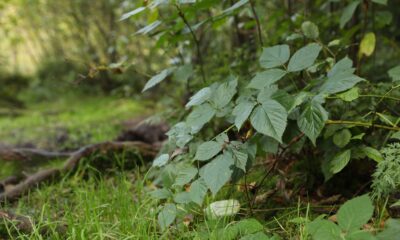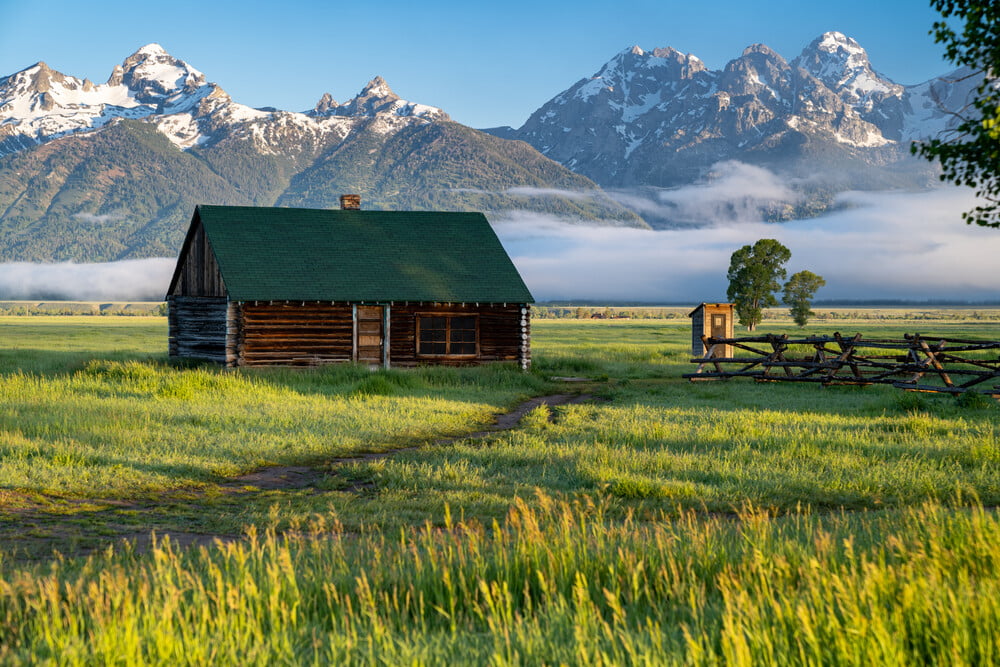
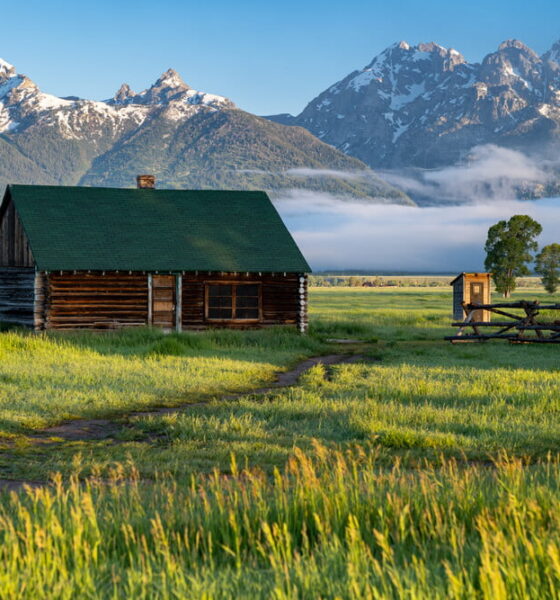
Lifestyle
What is Eco-Friendly Homesteading and How Does it Affect Your Insurance?
There are a lot of ways to live an eco-friendlier life. One of the best ways to be eco-friendly is to try homesteading.
The Growing Popularity of Eco-Friendly Homesteading
Homesteading is a new buzzword. It can be done in an eco-friendly manner. Many people are turning to this new lifestyle as a way to continually provide for themselves and their families. Others are unsure exactly what the “homesteading lifestyle” even entails.
Homesteading, at the most basic level, is the desire to become more self-sufficient. It is easy to see how this can align with an eco-friendly lifestyle. Anything that can be grown or homemade is done at home. The weekly cost of living usually decreases, but there are some obvious financial increases when one begins homesteading.
This kind of lifestyle usually means there are more things on a property that can be damaged or lost. That kind of increase means there is a higher insurance premium, something that is often overlooked. Luckily there are discounts and bundles available through home protector plus that help make homesteading more affordable, eco-friendly and attainable.
What is homesteading?
Homesteading isn’t a new term, but it is one that is finding new life in a variety of places. The idea of homesteading actually dates back to the Homestead Act of 1862.
This set of laws in the late 1800s was passed to encourage U.S. citizens to take ownership of over 160 acres of land surveyed by the government. The hope was to encourage expansion of the U.S. and allow adults and families to create their own “homesteads.”
Modern homesteading is different from the 1862 movement, but does throw back to the ideas and skills of the original act. Today’s homesteaders are looking to become more self-reliant by making their land and homes more self-sufficient.
The length and depth of the homesteading commitment are determined by each individual homesteader or family. It can be a small- or large-scale operation and can include many different activities. Many homesteads include some aspects of agriculture or home preservation of food, homemade products or clothing, animal raising, and some even provide their own power.
There are a lot of reasons that homesteading is good for the environment. For one thing, you will get used to living a lifestyle that is less focused on consumerism. This is good, because you will leave a lower carbon footprint by consuming less. You can also find ways to produce food and other goods with a lower carbon footprint on your own. You won’t have to buy things that have been transported across the state, which means that you aren’t contributing to the problem of carbon emissions from transportation.
The homestead group is incredibly diverse, although most of them are concerned about the planet. Each homestead has different elements, and those who choose to homestead have vastly different motivations. It’s a lifestyle of hard work, simplicity, and adventure. There are ways to make it more sustainable by using solar power or energy efficient generators.
How does homesteading affect insurance?
There are a lot of great things about homesteading, including its benefits for the environment. However, it is not without its new challenges as well.
The expansion of your property means you will need to increase your home insurance coverage. Building a thriving homestead usually means there are more structures, pieces of equipment, and assets that are susceptible to damage, loss, or even theft. You and your growing homestead need to be protected in order to help make your homesteading attempts successful.
The new structures, equipment, and animal life add up to more personal property. Personal property is covered by most homeowners insurance policies, but each addition can add more to your premium. Make sure to check with your agent to figure out what additional coverage you need to add to your policy.
If you decide to take on the full extent of homesteading, like completely off-grid living, then there may be even more coverage needs that reach outside the standard homeowners insurance policy. While you may have to pay more money for insurance to cover your new assets, you will likely save money with homesteading in other areas of your life.
Where can you homestead?
It may seem complicated and complex to homestead, especially if you want to take the eco-friendliest path possible. Many may be wondering where you can find the space or time to create your own homestead. The truth is that homesteading can and does happen in almost every type of community.
Urban Homesteads
The biggest expansion of homesteading is happening in urban areas. These densely populated cityscapes might seem devoid of growth and livestock, but many people are finding creative ways to homestead in small areas.
Urban homesteads tend to operate on a smaller scale. Many of these urban areas invest in growing their own produce and gardens. With limited space, these gardens feature mostly above-ground veggies, but still provide a substantial food source.
Other urban homesteads can keep and raise many animals, like backyard chickens. Some urban homesteaders turn to activities like beekeeping or composting to create elements of the homestead lifestyle.
Suburban Homesteads
The suburbs are those smaller cities and townships just outside large metropolitan areas. The residential areas of these communities offer a little more space and flexibility than an urban setting but still have their limitations.
Suburban homesteads can increase the size of their gardens, the type of crops and produce grown in those gardens, and the type of livestock they house. In many cases, larger animals can be housed in the larger backyards offered by the suburbs. Some of these homesteads sport chickens, ducks, turkeys, even goats.
Just like the more urban areas, the suburbs have city ordinances and codes that limit what can and cannot be grown or housed on any given residential property. These ordinances must be adhered to at all times and should be thoroughly researched before investing in the homestead process.
Rural Homesteads
Rural areas are the most traditional homestead landscapes. Many people would know these homesteads as fully functioning farms. These areas consist of large plots of land, some featuring dozens or hundreds of acres.
This kind of space offers the opportunity for a much larger scale operation. These homesteads often have large gardens or full orchards and bigger livestock, like milk cows.
Rural homesteads require a lot more time, energy, and money to keep them up and running. These homesteads require more supplies as well, like fruit tree fertilizer or large machinery. The upside is that these rural areas are usually outside any city limits so there are fewer restrictive limitations.
What are the benefits of homesteading?
The thought of creating and maintaining your own homestead may seem overwhelming, but there are four main benefits to consider.
#1 – Healthier Food Options
Homesteading almost always includes gardening at some level. This means a homesteader and their family will be able to grow their own produce and vegetables. These individuals will, quite literally, be able to walk to their backyards and pick fresh vegetables to add to their dinners that evening.
#2 – Traditional Skills and Values
Many families embark on the homestead adventure to teach and encourage traditional skills and values. Homesteading is an undertaking that often requires many hands.
#3 – Save Money
A big draw for homesteading is the ability to live a much more frugal lifestyle. Depending on the scale of a homestead, some families can provide for almost every one of their needs.
#4 – Family Bonding
Homesteading offers the chance for relational or family bonding. This is a lifestyle that requires a lot of teamwork. Families are able to work together to create a sustainable lifestyle and spend much more time together.
How do you get started?
With little to no experience in homesteading, it may seem impossible to start. There are, however, seven simple steps to follow to create the homestead you’ve been dreaming about.
#1 – Evaluate Your Space
The first step is to know what’s possible where you are. If you are planning on starting a homestead in your current residence, then evaluate the space you have. Research your city ordinances to make sure you can grow or house the plants and animals you are considering.
#2 – Set Goals
Set some goals for your homestead. Maybe you want to grow the homestead in two years, or maybe you want to create a fully sustainable setup in five years.
Whatever your goals are, write them down and keep them posted. Create a plan that outlines the necessary steps to get you where you want to be.
#3 – Create a Budget
Once you understand what you are allowed to do and what you are capable of doing in your space, create a budget. Research the elements of homesteading you’re interested in undertaking and find out cost-effective ways to make them happen.
#4 – Start Simple
The most important piece of advice is to start simple. Don’t start too many projects at one time. Consider a low-cost garden or replacing store-bought bread with homemade bread. These tasks may seem simple, but they are a great way to start the homesteading lifestyle without becoming overwhelmed.
As you grow your comfort and skill level, up the ante. Consider adding allowed animals to your homestead. Animals such as rabbits, chickens, ducks, turkeys, or goats are easier to care for in limited spaces, but still provide a recurring source of food or additives for your garden.
#5 – Simplify as You Grow
As you develop your homesteading skills, you will feel more confident in your ability to provide for yourself and your family. This lifestyle is all about simplifying, so start removing purchased products or services from your life as your homestead matures.
#6 – Learn as You Go
Don’t be afraid to say “I don’t know.” Homesteading is truly about growth and development, so be teachable. Look for new skills to master as your homestead grows, and don’t be afraid to try something once.
#7 – Build a Community
While the mantra of homesteading is self-sufficiency, it is not meant to be a solitary act. Find a community of like-minded people to get support and guidance on this journey.
About The Author: Laura Gunn researches and writes for the insurance comparison site, TheTruthAboutInsurance.com. She and her family are embarking on a homestead journey and she is passionate about sharing her knowledge with others.
Eco-Friendly Homesteading is a Booming Trend
There are a lot of benefits of homesteading, including the fact that it is an eco-friendlier way to meet your needs. You should consider creating your own homestead if you want to lower your carbon footprint. Just make sure that you understand the nuances of insurance!

